Future of Decarbonization in Building Sector
Listen to this Article
mins | This voice is AI generated.
mins | This voice is AI generated.
As per Global Alliance for Buildings and Construction, the buildings sector emits 39% of global CO2 emissions, of which 28% comes from the operation of buildings and 11% comes from building materials and construction.
It is estimated that over the next four decades, building floor area is projected to grow by over 3 trillion sq. ft. To achieve the vision of a decarbonized world and equitable climate action, reducing the carbon footprint of buildings is the key to mitigating the impacts of climate change.
In September 2019 at the UN Secretary General’s Climate Summit, countries as well as the private sector made commitments to a zero-carbon buildings sector, and also set a goal of mobilizing USD 1 trillion in zero-carbon building investments in developing countries by 2030. During the same period, the Net-Zero Asset Owner Alliance was founded, which consisted of some of the largest pension funds and insurers, showing their commitment towards carbon-neutral investment portfolios till 2050.
The building sector must decarbonize by decreasing energy intensity by at least 80% by 2030 and be climate neutral by 2050 to be compliant with the Paris Agreement goal of keeping global warming to 1.5°C above pre-industrial levels. Between 2010 and 2016, 24 EJ of growth in final energy demand globally from the building sector, was avoided, due to a combination of building energy policies, technology choices, and energy-efficiency measures. More action and policy initiative is needed to drive global decarbonization of buildings.
Key areas for decarbonization in buildings
To achieve decarbonization in buildings it is important to understand the key areas of focus to form targeted policies and actions. Building emissions are of two types
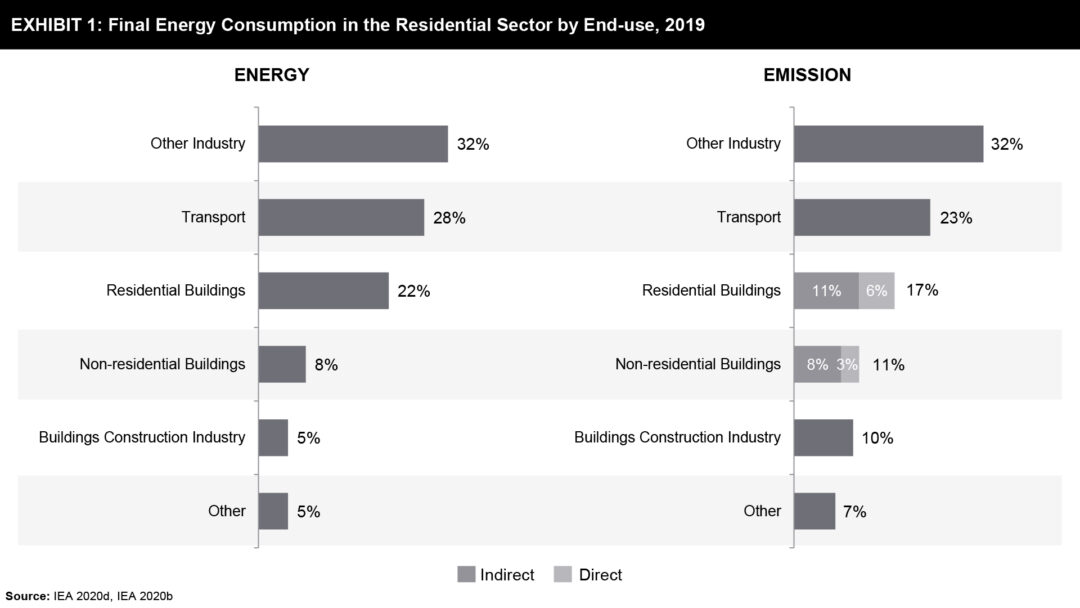

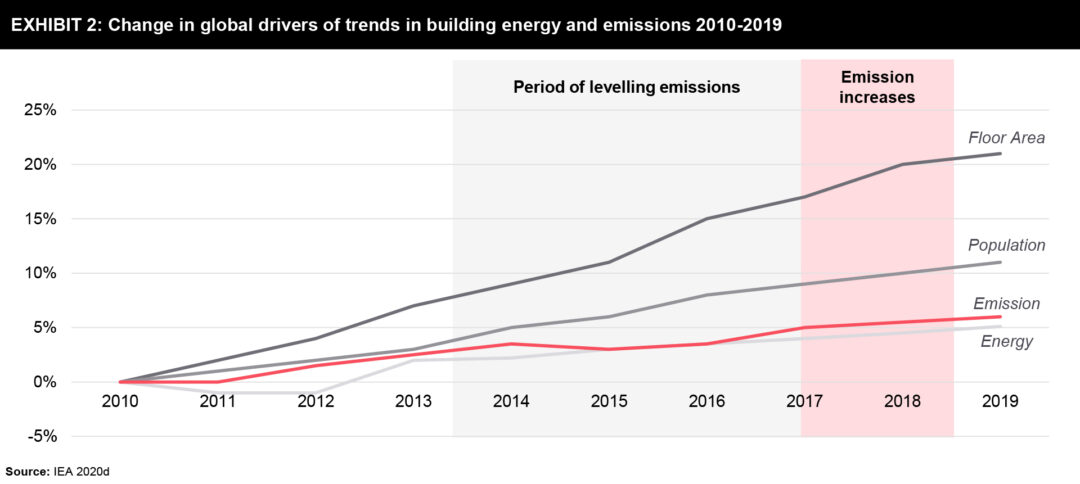

There are 4 pillars to decarbonization (Exhibit 3)
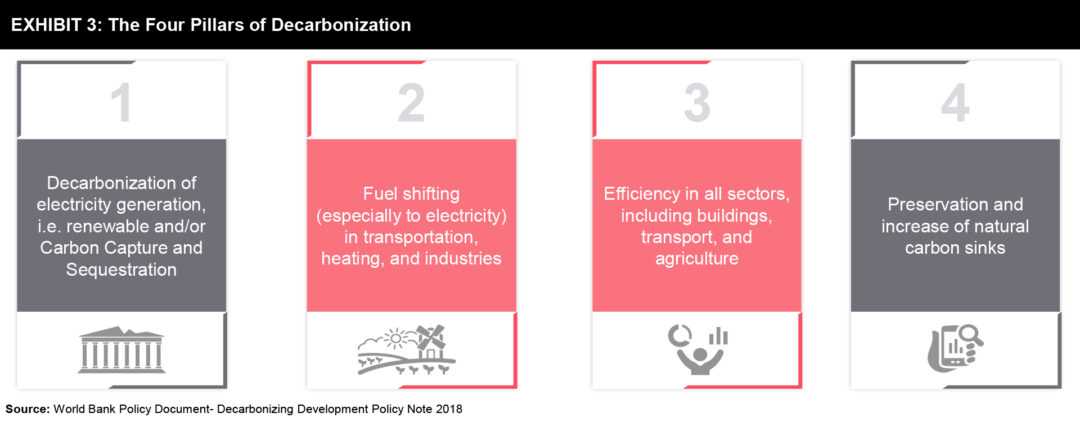

Pillar 2 and 3 are the areas where buildings play a role in decarbonization.
To support the shift of the buildings sector towards targets many countries have put in mandatory Building Energy Codes
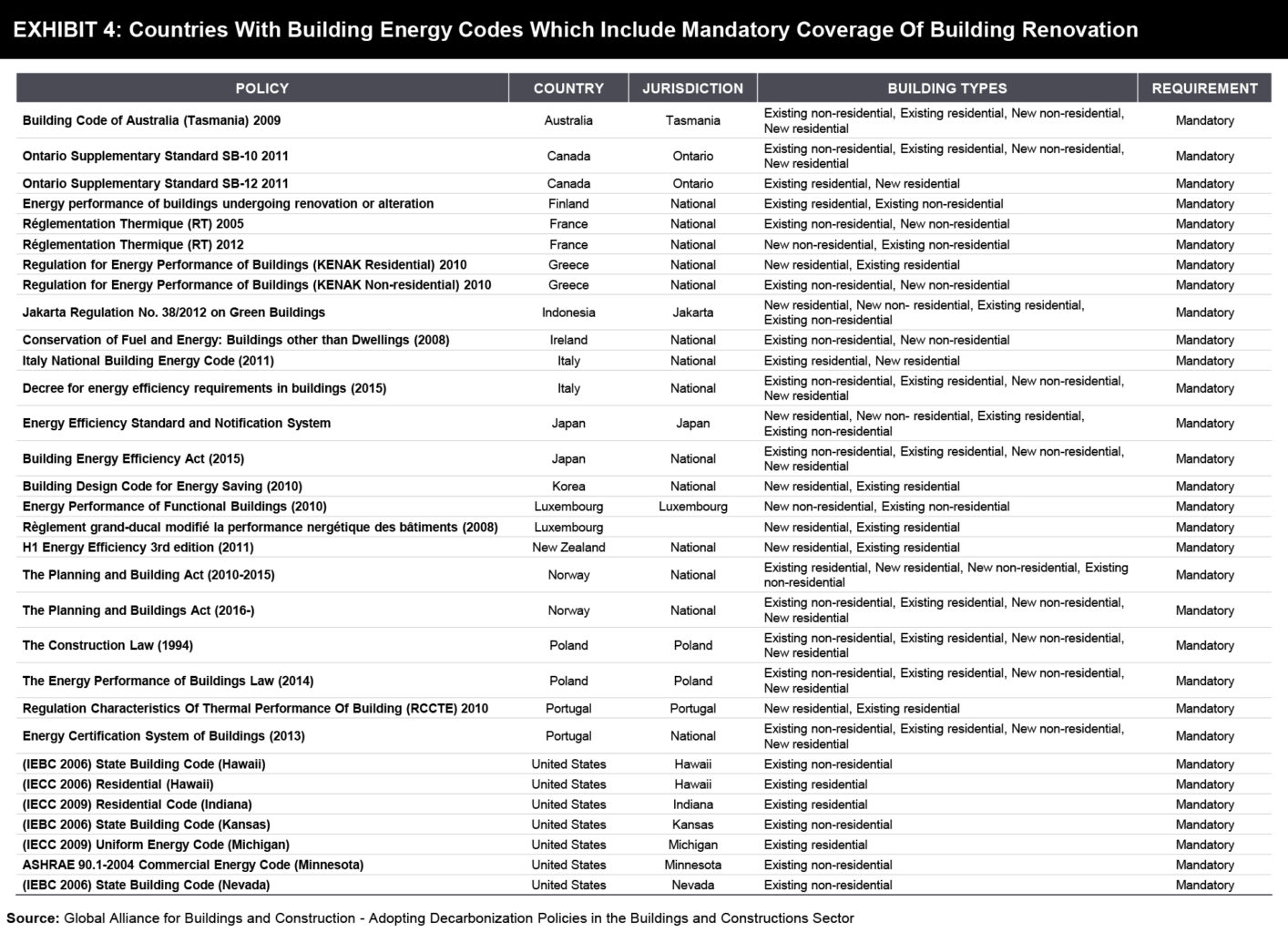

To aid in decarbonization, apart from policies, technology also plays a key role in achieving it
Heat Pumps for Decarbonization: The use of renewables and the re-use of excess heat and cold, are key enablers in Europe’s vision of achieving 100% renewable Heating and cooling by 2050.
In 2018, Buildings accounted for 40% of total final energy consumption in Europe, while transport and industry accounting for 28% and 23%. The main use of energy by households was for heating their homes (64% for the residential sector), with Renewable Source of Electricity accounting for 27% of space heating consumption. Heating and domestic hot water requirement accounted for 79% of total final energy use.
The shift to renewable-based heating & cooling will mainly be driven by building requirements. From 2021, The Energy Performance of Buildings Directive (EPBD) requires all new buildings to be nearly zero-energy buildings (NZEB). The buildings that will be NZEB compliant will have a bulk of their energy sourced from a renewable source, including sources produced on-site or nearby. The greatest hurdle to make building NZEB compliant lies in increasing the rate, quality, and effectiveness of renovations in buildings since the current rate in Europe is a mere 1.2% per year. The renovation approaches in Europe need to ensure that the renovation rate rises to between 2% and 3% each year. A recent study found that the renovation of buildings could lead to energy savings of up to 36% by 2030.
District Heating: In Europe, buildings are mainly supplied by distributed production units in buildings. District heating supplies heat for space heating and domestic hot water requirements, which is 12% of the building’s total energy demand. Cooling is powered by electricity, while heating is powered by fossil-fuelled individual heating solutions at the building level. In Europe, approximately 60 million citizens are served by District Heating. According to the International Energy Agency (IEA), around 11-12% of the EU’s heat demand is fulfilled by a network of 6,000 DHC chains. With rapid urbanization, with currently 72% of the European population living in urban areas, District Heating can meet the entire energy demand by 2050.
Alternative Cooling: Compared to conventional refrigerants used in typical air conditioners, the industry has developed alternative refrigerants that have much lower global warming potential. Alternatives to refrigerant-based Air conditioners exist, such as evaporative coolers that extract energy from the air to evaporate water. Evaporative coolers can be energy efficient but are only effective in areas with low humidity. Another alternative to refrigerant-based Air conditioners is Solar cooling systems, however, they are in limited use, and only fewer than 2,000 have been installed worldwide as of 2019.
To support the shift of the buildings sector towards targets that will help achieve the goals of the Paris Agreement, key actions from high-efficiency lighting and building design to low-cost building envelope measures can result in substantial global energy savings and emissions reductions per year between 2020 and 2050. This requires the radical collaboration of all actors along the building’s value chain, including clear and ambitious policy signals to address market failures, new business models aiming at economies of scale, building product innovation, and innovative financing solutions.
There are eight key areas that need focus to achieve a zero-emission, efficient, and resilient building stock by 2050:
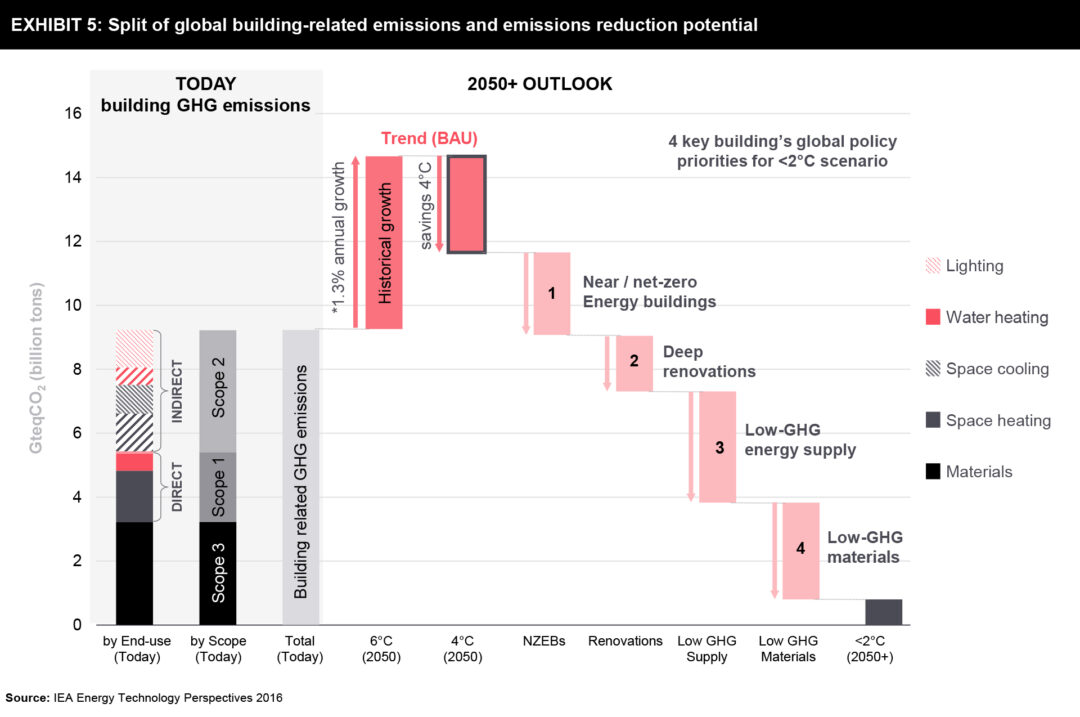

The Roadmaps outlined in Exhibit 6, shows a common vision for decarbonizing the buildings and construction sector and supports the development of national or subnational strategies and policies
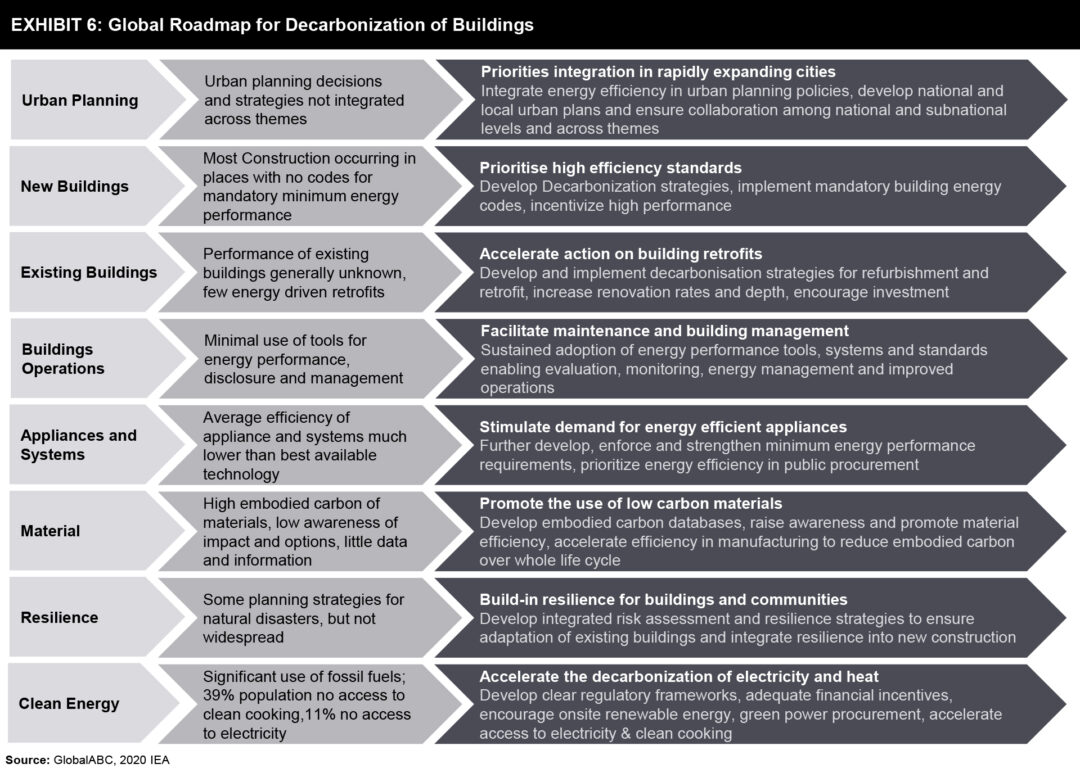

Share your focus area or question to engage with our Analysts through the Business Objectives service.
Submit My Business ObjectiveOur long-standing clients include some of the worlds leading brands and forward-thinking corporations.




























